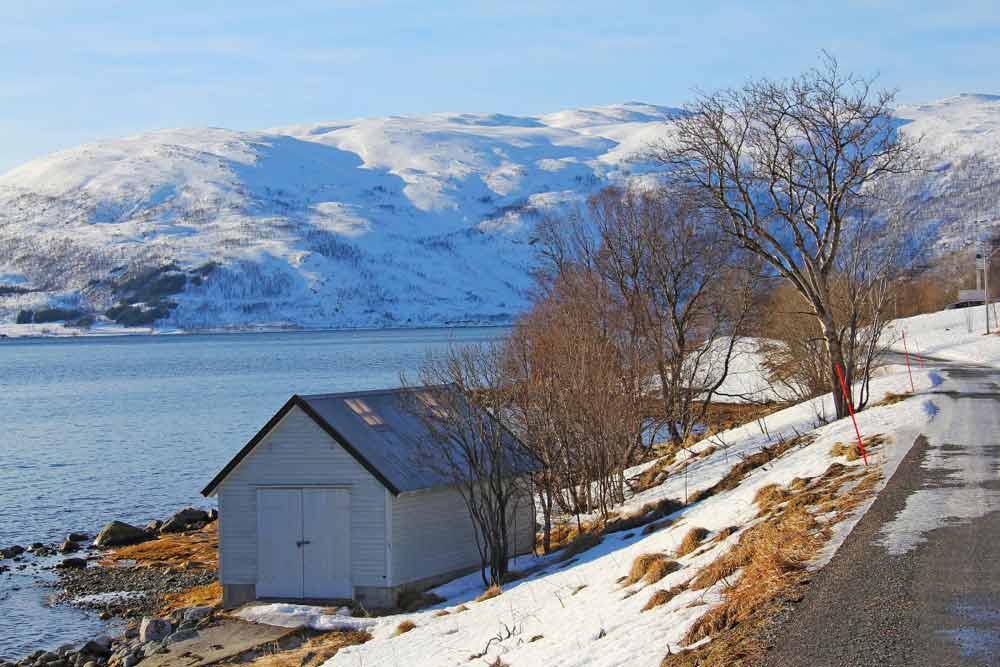People love to learn interesting facts about Scandinavia on the internet. Scandinavia, traditionally known as Scandia, encompasses a region of northern Europe defined by the majestic Scandinavian Peninsula. This geographical expanse is home to two prominent nations, Norway and Sweden, along with the culturally rich nation of Denmark. While traditionally limited to these three countries, debates persist regarding the inclusion of Finland, Iceland, and the Faroe Islands due to shared linguistic and geological characteristics.
Interesting facts about Scandinavia
The question of Scandinavia’s boundaries extends beyond mere geography, sparking lively discourse over which nations should be considered part of this distinctive region. Proponents argue for the inclusion of Finland, citing geological and economic factors, while others advocate for the incorporation of Iceland and the Faroe Islands based on linguistic similarities with Norway and Sweden. This ongoing debate underscores the fluidity and complexity of regional identities in northern Europe.
1. Norden: A Common Identity
The term “Norden” serves as a broader umbrella encompassing Denmark, Finland, Iceland, Norway, and Sweden—a collective of nations sharing commonalities and distinctions from the rest of continental Europe. This cohesive identity is characterized by thinly populated northern areas, abundant fish resources, remarkable longevity, and high literacy rates. Despite their nuances, these nations collectively embody the essence of Norden, forging a shared narrative rooted in cultural heritage and cooperation.
2. Safety Matches: Swedish Ingenuity
In 1855, Swedish inventor Jovan Edvard Lundstrom revolutionized the world with the creation of safety matches. Unlike earlier iterations, Lundstrom’s invention could only be ignited by striking the chemical-laden tip of the match against a rough strip of paper affixed to the exterior of matchboxes—a method still employed today. This innovation not only enhanced convenience and safety but also paved the way for modern fire-starting techniques, leaving an indelible mark on the world of household utility.
3. The Nordic Region: A Collective Identity
The Nordic Region encompasses Denmark, Norway, Sweden, Finland, and Iceland, as well as the Faroe Islands, Greenland, and Åland. This expansive geographical expanse is characterized by shared cultural, historical, and geopolitical ties, uniting diverse nations under a common Nordic identity. From the breathtaking landscapes of Norway’s fjords to the vibrant urban centers of Sweden and Finland, the Nordic Region offers a tapestry of experiences for residents and visitors alike, celebrating the rich tapestry of Nordic heritage and tradition.
4. Scandinavian Flags: Symbolic Unity
While Denmark, Norway, and Sweden each boast distinct national flags with unique color schemes, they share a common design element: a prominent cross. This symbolic motif underscores the historical and cultural ties that bind the Scandinavian nations together, representing shared values, heritage, and solidarity. Despite their differences, the flags of Denmark, Norway, and Sweden serve as enduring symbols of unity and collective identity within the Nordic Region, reflecting the spirit of cooperation and camaraderie that defines Scandinavian culture.
5. Linguistic Unity and English
Despite their shared linguistic ancestry, dialectal differences among Scandinavian countries can pose challenges to communication. Consequently, when conversing with individuals from different Scandinavian nations, English often serves as a lingua franca, facilitating smoother and more comprehensible dialogue. This pragmatic approach reflects the region’s commitment to effective communication and cross-cultural understanding, bridging linguistic divides and fostering cooperation on both regional and global scales.
6. From Ladders to Lego
The iconic toy company Lego, renowned for its colorful building blocks, has a surprising origin story. Founded in Denmark in 1932 by Ole Kirk Christiansen, Lego initially specialized in manufacturing wooden toys, including ladders and wooden ducks. However, in 1949, Lego introduced its first plastic interlocking bricks, marking the beginning of its transformation into a global toy empire. Today, Lego’s enduring popularity and innovative designs continue to captivate generations of children and adults worldwide, proving that even humble beginnings can lead to extraordinary success.
7. Tetra Pak: Swedish Ingenuity
In 1951, Swedish engineer Erik Wallenberg introduced the world to Tetra Pak, a revolutionary packaging and storage technique. Designed to preserve and transport liquids such as milk and juice, Tetra Pak utilizes laminated paperboard coated with polyethylene and aluminum foil, creating a lightweight yet durable container. This innovative packaging solution quickly gained popularity worldwide due to its convenience, durability, and ability to extend the shelf life of perishable goods. Today, Tetra Pak is ubiquitous in supermarkets and households globally, symbolizing Swedish ingenuity and technological innovation.
8. Kingdom of Scandinavia: Geographic Clarification
Contrary to popular belief, Scandinavia is not located in Scotland’s northeast but rather comprises the northern European countries of Norway, Sweden, and Denmark. While these nations share cultural and historical ties, they are distinct entities with their governments and identities. However, it is worth noting that Norway, Sweden, and Denmark are all part of the larger Kingdom of Scandinavia, a geopolitical entity that reflects their shared Nordic heritage and cooperative relations.
9. Nobel’s Explosive Inventions
Swedish inventor Alfred Nobel left an indelible mark on history with his pioneering work in explosives. In 1867, Nobel patented dynamite, a powerful and versatile explosive that revolutionized industries such as construction, mining, and warfare. Not content with his invention’s destructive potential, Nobel also developed the detonator used to ignite dynamite safely and reliably. Despite his contributions to the field of explosives, Nobel’s enduring legacy extends beyond warfare and destruction; in 1895, he established the Nobel Prizes, honoring individuals and organizations for their contributions to humanity in fields such as science, literature, and peace.
10. Celsius Thermometer: Swedish Innovation
Anders Celsius, a prominent Swedish academic, left an indelible mark on the world of science with his invention of the Celsius thermometer. Renowned as an adventurer and astronomer, Celsius revolutionized temperature measurement by devising a standardized scale based on 0° for the freezing point of water and 100° for its boiling point at standard atmospheric pressure. This intuitive and user-friendly system, known as the Celsius scale, has become universally adopted for its simplicity and accuracy, providing a common language for scientists and meteorologists worldwide to communicate temperature data effectively.
11. Viking Legacy: Exploration and Conquest
The Vikings, seafaring warriors from Scandinavia, forged a legacy of exploration and conquest that left an indelible mark on the world. From their homeland in Scandinavia, Vikings embarked on daring voyages of discovery, settling in regions such as Scotland, Iceland, Canada, Greenland, the Hebrides, and the Faroe Islands. Famed for their prowess in navigation and warfare, the Vikings established thriving settlements, traded goods across vast distances, and exerted influence over territories far beyond their Nordic homelands. Their enduring legacy continues to captivate imaginations and inspire a fascination with the rich tapestry of Viking history and culture.
12. Stockholm: Scandinavia’s Urban Hub
Stockholm, the capital city of Sweden, reigns as the largest urban area in Scandinavia, serving as a vibrant nexus of culture, commerce, and innovation. With a population of 975,904 people as of 2019, Stockholm embodies the dynamic spirit of modern Scandinavian society, blending historic charm with contemporary sophistication. Nestled across a series of islands and connected by picturesque bridges, Stockholm boasts a rich cultural heritage, world-class museums, and a thriving culinary scene. As Scandinavia’s leading urban center, Stockholm offers residents and visitors alike a diverse array of experiences, from exploring historic landmarks to indulging in the city’s renowned design and fashion culture.

13. Öresund Bridge: Connecting Southern Sweden and Denmark
The Öresund Bridge provides a seamless connection for travelers journeying between Southern Sweden and Denmark. Stretching across the Öresund Strait, this remarkable engineering marvel serves as both a bridge and a tunnel, linking the Swedish city of Malmö with the Danish capital of Copenhagen. Opened in 2000, the Öresund Bridge has transformed regional transportation and fostered closer ties between the two neighboring countries, facilitating swift and convenient travel for commuters, tourists, and cargo alike.
14. Moose Crossing Signs: A Quirky Phenomenon in Sweden
In Sweden, road signs depicting moose crossing the road have become unexpectedly popular targets for theft. Despite their mundane purpose of warning drivers about potential wildlife hazards, these signs have garnered attention for their distinctive design and quirky appeal. Whether coveted as souvenirs or simply as whimsical decorations, moose crossing signs have earned a reputation as coveted collectibles among residents and visitors alike. This peculiar phenomenon underscores the unique cultural quirks and humor prevalent in Swedish society, adding a touch of whimsy to the nation’s roadways.
15. Linguistic Challenges: English as a Lingua Franca
Dialectal variations within Scandinavian countries can pose communication challenges, leading residents to opt for English as a common language when conversing with individuals from different regions. This pragmatic approach helps mitigate misunderstandings and ensures smoother dialogue, particularly in multicultural settings or cross-border interactions. By embracing English as a lingua franca, Scandinavians foster effective communication and promote mutual understanding across linguistic barriers, enhancing cohesion and cooperation within the region.
16. Paper Clip Innovation: Johann Vaaler’s Legacy
The humble paper clip, an indispensable office accessory, owes its origins to Norwegian inventor Johann Vaaler. In 1889, Vaaler patented his design for a paper clip in Germany, followed by a subsequent patent in the United States in 1901. Despite its simplicity, the paper clip’s enduring utility and versatility have made it a ubiquitous tool in offices and households worldwide. Vaaler’s innovative contribution to office supplies underscores Scandinavia’s tradition of creativity and ingenuity, leaving an indelible mark on everyday life. How AI, ChatGPT maximizes earnings of many people in minutes
17. Pasta Craze in Scandinavia
Scandinavians have developed a fondness for pasta, consuming more of it than any other country on the planet. This culinary trend reflects the region’s diverse palate and penchant for global cuisine, with pasta dishes featuring prominently in Scandinavian kitchens. Whether enjoyed in traditional Italian recipes or innovative Scandinavian creations, pasta offers a versatile canvas for culinary experimentation and creativity. This widespread popularity underscores Scandinavia’s embrace of culinary diversity and its vibrant gastronomic culture, enriching the culinary landscape of the region with a tantalizing array of pasta-based delights. Motivation – Mind – Success – Thinking – Productivity – Happiness
18. Alfred Nobel’s Dynamite Revolution
In 1866, Swedish inventor Alfred Nobel introduced dynamite to the world, forever changing industries such as demolition, mining, and quarrying. This powerful explosive, comprised of nitroglycerin absorbed in an inert substance, offered unprecedented efficiency and safety compared to previous explosives. Today, dynamite remains a cornerstone of modern construction and excavation, utilized globally for its effectiveness in shaping landscapes and facilitating infrastructure development. Nobel’s invention revolutionized industrial practices, demonstrating the transformative impact of scientific innovation on society’s progress and prosperity. Business – Money Making – Marketing – E-commerce
19. Uniting Three Nations: Scandinavia’s Composition
Scandinavia, comprising three distinct countries—Norway, Sweden, and Denmark—stands as a testament to the rich cultural heritage and shared history of the Nordic region. Despite their individual identities and governmental structures, these nations are united by common linguistic and cultural ties, forging a collective identity rooted in Scandinavian heritage. From the rugged fjords of Norway to the picturesque landscapes of Sweden and the vibrant cities of Denmark, Scandinavia offers a diverse tapestry of landscapes, traditions, and experiences for residents and visitors alike to explore and appreciate. Health books, guides, exercises, habits, Diets, and more
20. The Emergence of ‘Scandinavia’
The term “Scandinavia” emerged relatively recently, gaining prominence in the 18th century as a geographical and cultural designation for the Nordic region. Coined to encompass the three principal countries of Norway, Sweden, and Denmark, “Scandinavia” reflects the growing recognition of shared linguistic, cultural, and historical bonds among these nations. Over time, the term has come to symbolize the unique character and collective identity of the Nordic region, serving as a unifying concept that celebrates the region’s rich cultural heritage and contributions to the global community. Fitness – Meditation – Diet – Weight Loss – Healthy Living – Yoga
21. Linguistic Affinity: Mutual Understanding
Scandinavians share a remarkable linguistic affinity that enables them to more or less understand each other’s languages. Despite the presence of distinct dialects and variations within Norwegian, Swedish, and Danish, the structural similarities and shared vocabulary facilitate communication and comprehension among speakers of these languages. This mutual intelligibility fosters a sense of camaraderie and cultural kinship among Scandinavians, promoting cross-border cooperation and cultural exchange within the region. By embracing their linguistic heritage, Scandinavians strengthen their bonds of unity and solidarity, reinforcing the sense of shared identity that defines the Nordic community. RPM 3.0 – 60% CONVERSION & Money for Affiliate Marketing
We believe you have enjoyed these interesting facts about Scandinavia!
More Interesting Articles




